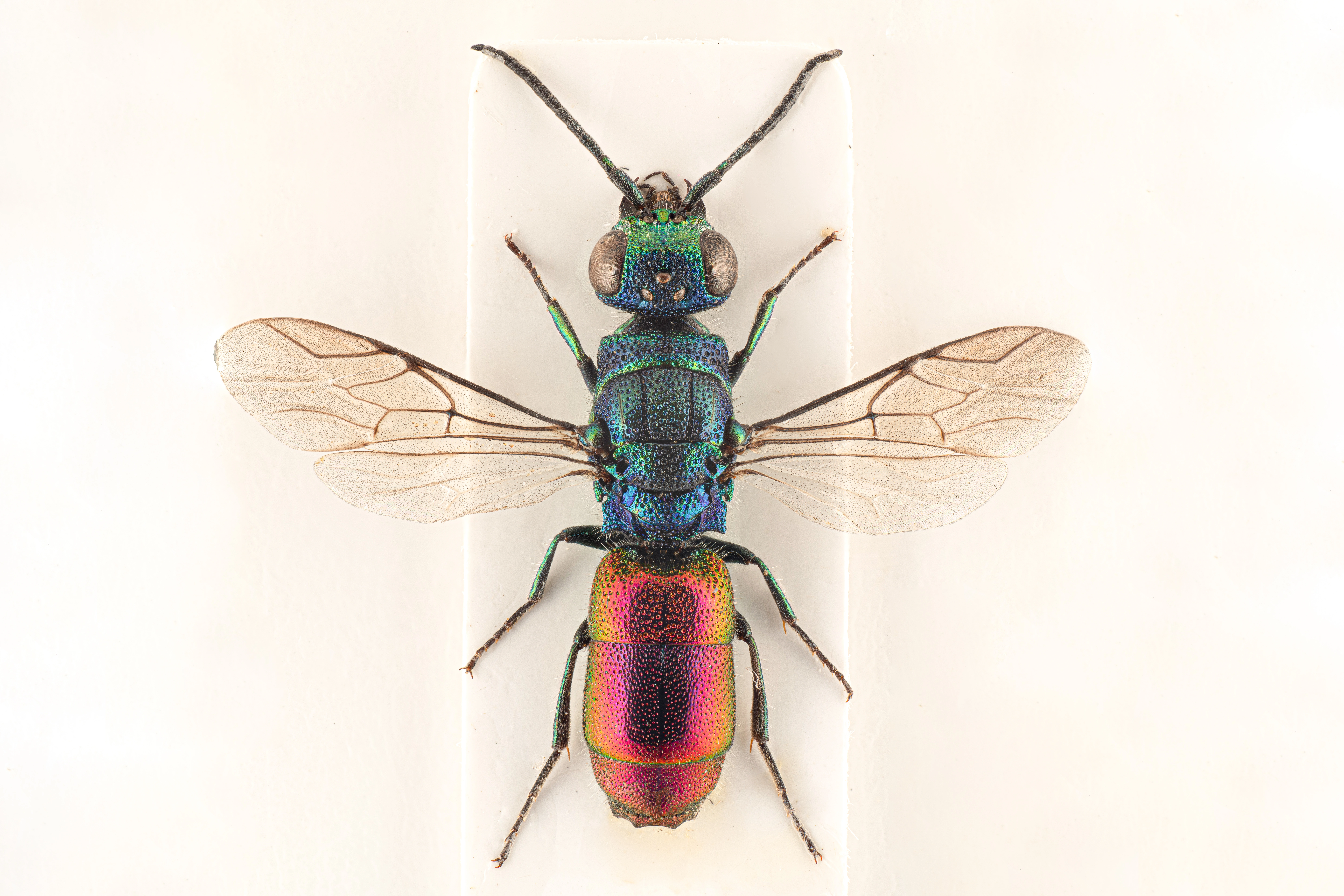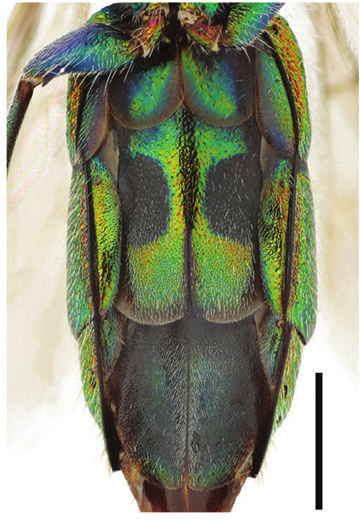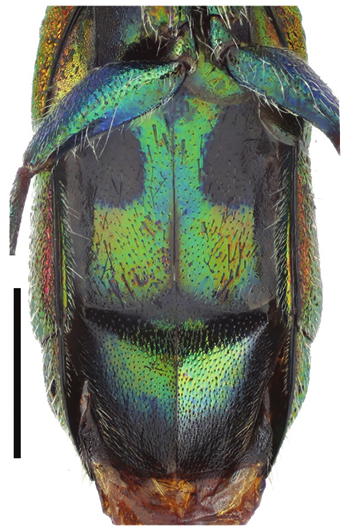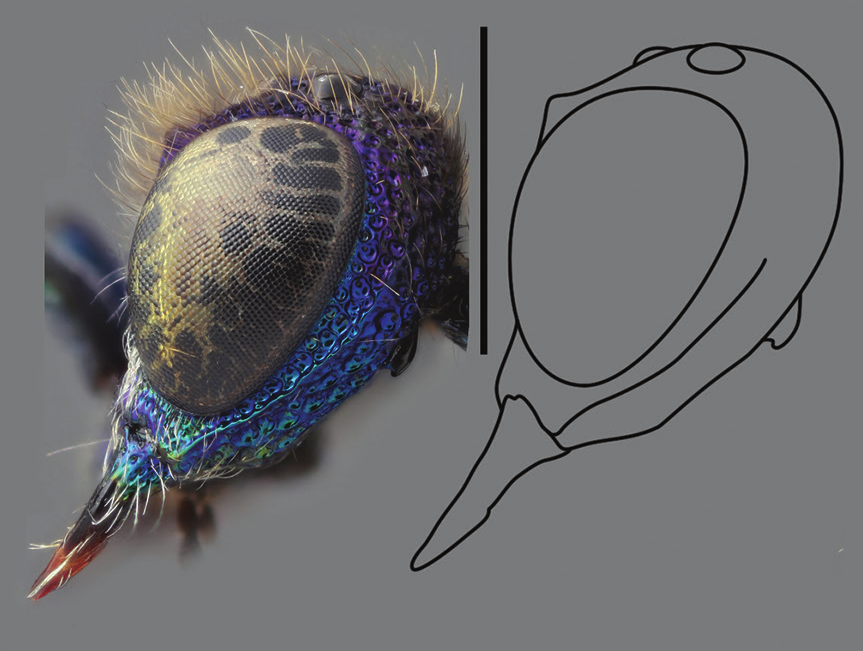Chrysis leptomandibularis
The species is very rare, and only recorded twice in Fennoscandia from Norway (2015) and Finland (1942). The host is probably Symmorphus debilatatus. C. leptomandibularis is very similar to C. angustula in body shape and punctation, but females can be recognized by the extremely thin mandibles.
- Innhold
- Diagnosis
- Distribution
- Biology
Diagnosis
Figure 118
Metasoma, ventral view: C. leptomandibularis ♀. Scale 1 mm.
Figure 127
Metasoma, ventral view: C. leptomandibularis ♂. Scale 1 mm.
Figure 142
Head, lateral view: C. leptomandibularis ♀. Scale 1 mm.
Figure 145
Head, lateral view: C. leptomandibularis ♂. Scale 1 mm.
Length 5–8 mm.
The size and shape of the body are similarly slender and elongate as in C. angustula. However, the flagellomeres are shorter, S2 is greenish (not reddish) with shorter black spots (Figs 118, 127) and the mesoscutum has wider, strongly shining interstices between the punctures in the female. The mandible is extremely thin in the female (medial width less than one third of its basal width) (Fig. 142) and somewhat thicker in the male (medial width about one third of its basal width) (Fig. 145). Compared to C. schencki, the mandible is thinner, the punctation of the mesoscutum is sparser and the body is more slender.
Distribution
Estonia, Finland, Latvia, Lithuania, Norway. Rare. Only one old record is known from Finland. New to Norway (1 ♀, Østfold, Aremark, Teigen, 59.254°N, 11.644°E, 9.VIII.2015, leg. F. Ødegaard).
West Palearctic: central and northern Europe (Niehuis 2000).
Be aware that the records present in the GBIF map may be misleading for some countries due to unrevised data sets or missing information.
GBIF Taxon: Chrysis leptomandibularis Niehuis, 2000Biology
Habitat: forest margins, clearings and gardens with sun-exposed dead wood. Adults have occasionally been found on flowers of Apiaceae and Rosaceae (Rosa 2006, our own obs.).
Flight period: June to August.
Host: probably Symmorphus debilitatus (Saussure) (Vespidae) (Niehuis 2000, Pärn et al. 2014).




